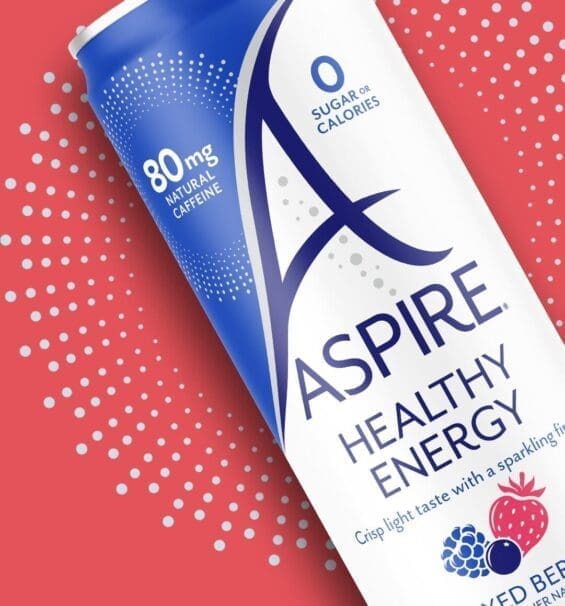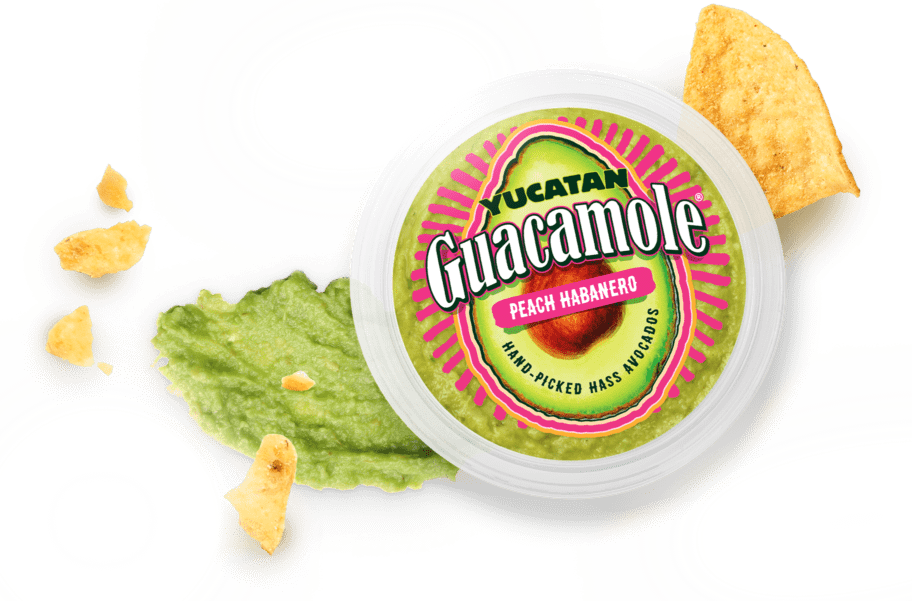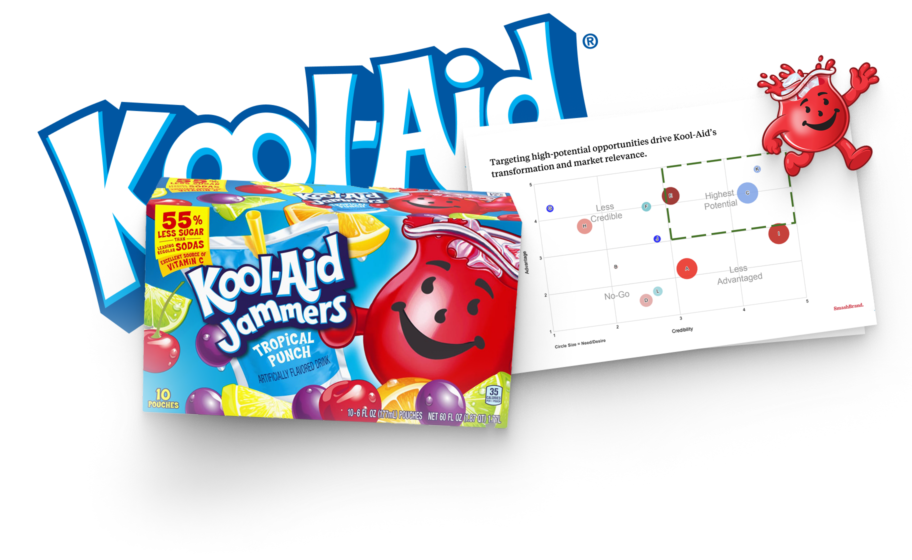Bottles are one of the most widely used packaging items in the FMCG sector. It helps to store liquid items such as drinks & beverages, household liquids, sauces, ketchup, and car care liquids. Each item requires a unique bottle packaging design to convey its message directly to the consumer. Thus, various factors come into play when bottle packaging for the target consumer.
Factors include the size, shape, and construction material used to make the bottle. From a functionality and stability standpoint, products of different compositions behave differently with their packaging. For example, soft drinks are usually packaged in aluminum cans or plastic bottles to avoid reactions.
All these contributing factors make the design of bottle packaging a challenging task. However, this comprehensive guide will uncover the secrets of packaging design strategies.
What are the key elements to consider in bottle packaging design?
Crafting an effective product bottle design is a strategic tool for enhancing consumer engagement. For brands seeking to create the best bottle packaging design, understanding the critical components behind a successful execution is non-negotiable. Every detail, from shape to visual storytelling, contributes to a package that resonates with today’s consumers.
When designing a bottle, typography and fonts must be carefully chosen to capture instant attention. Paired with compelling imagery and graphic elements, these creative choices elevate bottle packaging ideas into true shelf standouts.
In a competitive landscape driven by design innovation, it is essential to get every element right. Let’s dive deeper into the fundamentals that define exceptional bottle and packaging design, and how they influence buying behavior.
Typography and font selection.
In bottle product design, typography and fonts are not just decorative; they serve as essential communication tools. The right choice helps consumers instantly connect with the product inside the bottle, reinforcing both expectation and experience.
When designing a bottle, selecting distinctive, easy-to-read fonts strengthens brand identity and elevates consumer trust. A great example is the legendary Dom Pérignon champagne, where carefully crafted typography reflects tradition, exclusivity, and the spirit of premium alcohol packaging.
Aligning font style with product characteristics isn’t just about aesthetics; it’s a crucial step in creating a truly premium bottle design that stands out among competitors.
Imagery and graphic design.
In bottle packaging design ideas, visual storytelling is just as crucial as structure. Carefully curated imagery, colors, and graphics help capture consumer attention and enhance the overall product packaging design.
When you design a bottle, every visual element must reflect the product’s true character. Take the Dom Pérignon bottle, for example; its iconic dark green hue isn’t random; it’s a deliberate nod to heritage, prestige, and craftsmanship, setting a high standard for premium alcohol packaging.
Aligning visuals with brand essence transforms bottle packaging ideas into unforgettable shelf experiences—and makes all the difference in a crowded marketplace.
Hierarchy and information placement.
Clear hierarchy and thoughtful information placement are crucial elements in packaging bottle design. A strong structure ensures that key details, such as the brand name, are immediately visible, creating stronger brand recognition at first glance, especially in competitive beverage packaging design.
Supporting information, like ingredients or nutritional facts, often takes a back seat. But, in reality, even these minor details can strengthen consumer attention when thoughtfully designed, contributing to a more comprehensive and trustworthy brand experience.
Understanding consumer psychology in bottle packaging design.
The FMCG sector is fiercely competitive, making it essential for brands to capture and retain consumer attention through strategic consumer goods packaging. In crowded spaces, standing out isn’t optional; it’s survival.
Whether developing consumer packaging branding for FMCG products or other CPG brands, implementing emotional engagement strategies is key to influencing purchasing behavior.
Effective bottle and packaging design not only catches the eye but also taps into the consumer’s emotions by showcasing creativity, originality, and design innovation.
A thoughtfully crafted bottle can instantly evoke positive feelings, increasing the chances that a consumer will choose your product over a competitor’s.
Here are three powerful ways to connect emotionally through bottle packaging design:
- Visual Perception: How consumers visually process packaging for bottle products has a direct impact on their decision-making. Strong visuals command attention and stir emotional responses almost instantly.
- Color Psychology: Colors evoke powerful emotional triggers. Intelligent product bottle design utilizes colors strategically, aligning brand identity with consumer expectations to foster stronger emotional bonds.
- Shape, Texture, and Material: The various shapes of bottles for packaging, combined with texture and material choices, significantly influence consumer perception. A sleek, elegant form can convey luxury and exclusivity, attracting potential customers who seek premium experiences.
How to create a winning bottle packaging design.
Now that you have explored the essential elements of product packaging design, it is crucial to recognize that visual beauty alone is insufficient to build a successful brand in today’s competitive landscape.
A winning bottle design ensures that every detail, from drinking vessels to artistic interpretations, leads directly to purchase intent. Truly ideal packaging is strategic, blending creative appeal with functionality to drive sales and foster brand loyalty.
Just as leading designers are featured in exhibitions like the Corning Museum, showcasing innovations in form and purpose, brands must think beyond traditional rules to capture consumer attention. Whether you’re crafting a sleek wine bottle, an elegant spirit for whisky craftsmanship, or a standout food product, the goal is always the same: create emotional impact and lasting value.
Guided by the principles of design innovation and circularity, modern global design directors inspire a new standard for sustainable and practical packaging. Drawing from the creativity of showcased designers worldwide, the future belongs to brands that elevate every bottle into a work of art and a powerful marketing tool.
Here’s how you can leverage these insights to optimize your retail packaging design and dominate the shelf and increase purchase intent:
Researching the target market.
Thorough market research is the foundation of any successful product packaging design. Understanding the target market not only reveals packaging trends but also enables bottle packaging design agencies to create premium packaging solutions that genuinely resonate with consumer needs.
By conducting in-depth market research, brands can identify the demographics, behaviors, and preferences of their target customers. This insight is crucial for developing packaging that stands out on the shelf, much like the iconic designs seen from legendary distilleries, where every detail is crafted to appeal to a specific audience. Additionally, analyzing competitors’ strategies and identifying market gaps allows brands to gain a real competitive edge.
Establishing Brand Identity Through Packaging
Packaging is a powerful storytelling tool that defines your brand identity. Effective packaging solutions create a lasting impression, instantly conveying your brand’s values, personality, and mission to potential customers. Start by clearly defining your brand’s core values and personality traits. Is your brand committed to eco-friendly packaging, luxury experiences, innovation, or a sense of fun?
Leverage custom packaging elements, such as distinctive color palettes, typography, and imagery, that align with your brand’s visual identity. Maintaining consistency across all your containers and packaging designs strengthens brand recall and helps build consumer trust over time.
Partnering with a bottle branding agency can further refine your approach, helping you craft an authentic narrative around your brand’s history, mission, and unique selling proposition, all brought to life through strategic, cohesive packaging.
Choosing the Right Bottle Shape and Size
Selecting the appropriate bottle shape and size for your product, such as mason jars, can create brand differentiation and enhance the consumer experience.
Here are some best practices to consider:
- Consider factors such as ease of handling, pouring, and sealing.
- Explore unique bottle shapes that differentiate your brand and make your product stand out on the shelves.
- Experiment with variations in the curvature, silhouette, or embossing of the bottle to create a visually appealing and memorable packaging solution
- Evaluate the shelf presence of different bottle shapes and sizes to ensure they maximize visibility and make a substantial impact.
Selecting Appropriate Packaging Materials
It is the most crucial step in bottle packaging design. Some products, such as soft drinks, acids, and car care items, are reactive. Thus, the bottle material should be chosen to avoid reactions.
Here are some packaging design tips to keep in mind:
- The packaging must be durable enough to withstand environmental conditions and protect the product.
- Use sustainable packaging materials such as Bioplastics
- Using recycled materials, such as recycled plastic or glass, in bottle packaging reduces the demand for virgin materials and decreases waste
Typography and Label Design
You now understand the importance of typography and label design in product packaging. These elements also shape brand perception, engage consumers, and ensure compliance with legal requirements. Follow these tips for the best results.
- Choosing the right font that aligns with your brand identity and product category.
- Fonts should be clear, easily readable, and appropriate for the target audience.
- Typography should convey the desired message, evoke the right emotions, and reflect the brand’s personality
- Label design must comply with legal requirements and regulations, especially for food, pharmaceuticals, or other regulated products
Color and Visual Elements in Bottle Packaging Design
Choose your bottle’s colors and visuals wisely to create a strong brand identity, showcase product features, and appeal to potential customers. Follow these best practices:
- Different colors evoke specific emotions and associations. For example:
- Red: Energizing, passionate, and attention-grabbing.
- Blue: Calming, trustworthy, and reliable.
- Green: Natural, fresh, and eco-friendly.
- Yellow: Optimistic, cheerful, and youthful.
- Black: Elegant, sophisticated, and luxurious.
- Using high contrast between background and text ensures readability and clarity.
- Consider the color of the product itself when selecting the packaging color.
- Visual elements and graphics should align with your brand story, product attributes, and target audience.
Incorporating Information and Branding
When it comes to influencing consumers’ buying choices, packaging can make a significant impact. Therefore, it is vital to consider the following key factors:
- The product name must be prominently displayed on the bottle packaging, making it easier for consumers to identify the product.
- Nutritional information should be clearly stated, including calorie content, macronutrients, and allergen warnings.
- Incorporate your brand’s logo in a prominent position on the bottle packaging to ensure instant recognition.
- Prioritize essential information such as the product name, branding elements, and key product features but be careful not to clutter the front panel.
Enhancing Packaging with Finishing Touches
To make bottle packaging stand out, incorporating finishing touches can add a touch of elegance, sophistication, and interactivity. Here are some techniques to enhance bottle design:
- Use embossing, debossing, and foiling methods to add life to the product packaging design.
- Use spot varnish to highlight logos, product names, or other essential design elements, adding depth and dimension.
- Using smart packaging allows brands to display additional product information, interactive games, or virtual demonstrations when scanned with a mobile device.
Bottle Packaging Design Examples For Different Market Segments
Luxury and premium bottle packaging aim to convey elegance, exclusivity, and a sense of craftsmanship. For example, the Foley Family’s wine is an excellent example of wine packaging design.
Klean Kanteen is a good example when discussing eco-friendliness and sustainability. It is known for its high-quality stainless steel water bottle packaging design, made from recycled materials, which supports people and the planet.
Dr. Pepper also designs soda bottles targeting children, adults, and millennials. The company offers various flavors, each one resonating with the target consumers’ preferences.
PRIME sports drink utilizes vibrant colors to capture the attention of its target consumers in the sports and fitness sector.
The stylish design of Isle of Harris Gin bottles resonates with different lifestyle events. The company uses glass bottles with unique textures.
Packaging Testing and Evaluation
Packaging testing and evaluation are the key to unlocking new marketing strategies and design ideas. The following are some best practices and procedures to help a CPG brand development agency execute a successful strategy.
- Conduct usability testing, such as assessing the ease of opening, pouring, or dispensing the product.
- Consider factors such as color scheme, font legibility, branding elements, and overall design coherence.
- Analyze sales data, consumer feedback, and market trends to identify opportunities for improvement.
Bottle Packaging Design Trends
Modern bottle packaging design trends prioritize simplicity and minimalism. The focus is on clean lines, sleek typography, and uncluttered layouts, resulting in a visually appealing packaging.
Technological advancements have opened opportunities for integrating intelligent features into bottle packaging. It includes interactive elements, such as NFC tags or QR codes.
As environmental consciousness grows, sustainability remains a significant trend in bottle packaging design. Different brands are adopting eco-friendly materials, such as recycled plastics, biodegradable options, and renewable resources, to minimize their environmental impact.
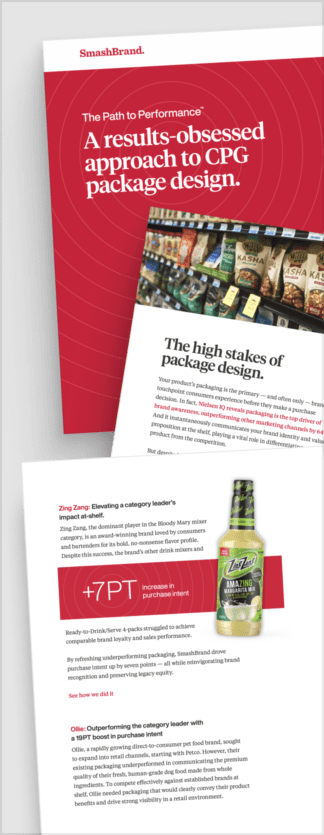
Path to Performance™
Taking a results-obsessed approach to CPG package design.
Discover how SmashBrand’s proprietary process, rooted in scientific principles, informed by data, and validated by your target audience, eliminates the guesswork from package design and delivers guaranteed results.
Data-Driven Brand Development For CPG Companies
SmashBrand is a brand development agency for FMCG and CPG companies. From brand strategy to packaging design testing, our Path to Performance process guarantees a retail performance lift. Book a time to discuss your project with our team.

Nice Package
Don’t miss out on our monthly newsletter Nice Package!
Each month, we deliver a data-driven newsletter directly to your inbox, unpacking a critical topic in the FMCG & CPG industry.
"*" indicates required fields
Subscribe to
Nice Package.
SmashBrand’s Nice Package: Stay current with our latest insights
Free Resource.
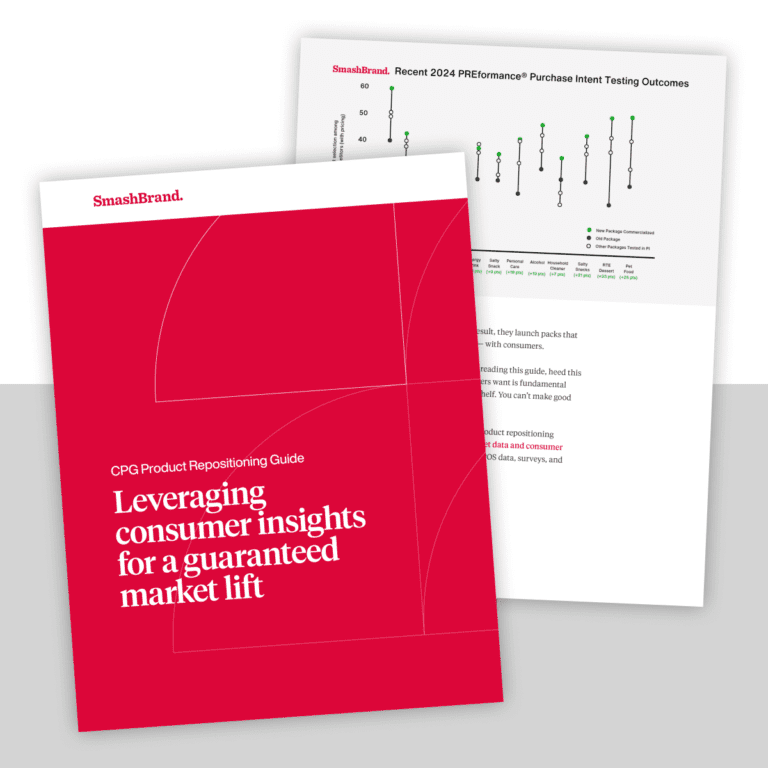
CPG product repositioning guide.
Explore the five undeniable signs your CPG product needs repositioning along with strategies for leveraging consumer insights for a guaranteed market lift.
Download Whitepaper About CPG product repositioning guide.
